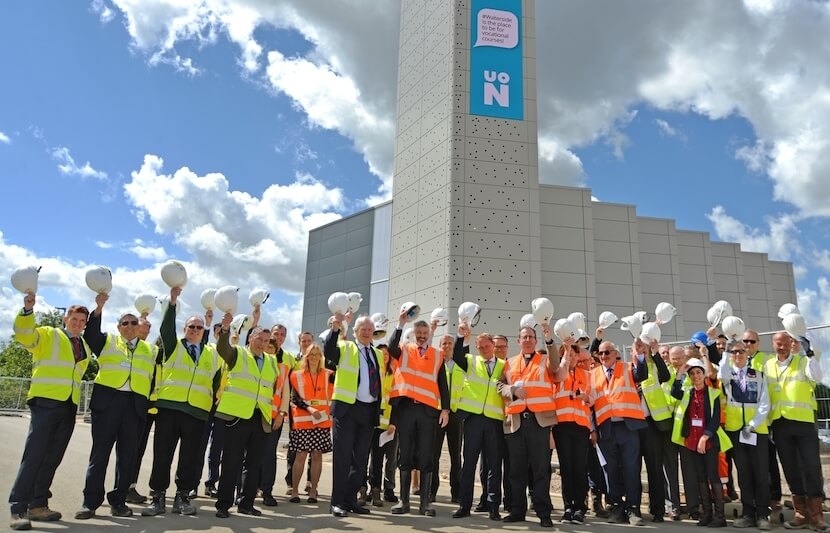The University of Northampton (UON) in England is preparing to relocate students to its new sustainable and state-of-the-art Waterside campus in 2018.
The new campus, located on the banks of the River Nene, will provide academic facilities for 15,000 students, and has been designed to be as energy efficient as possible.
The buildings have been orientated and shaped to minimize artificial cooling, lighting and heating requirements, and will be implemented with LED lighting and high-thermal performance windows.
Additionally, UON has been working alongside Vital Energi, a company that provides energy generation and management solutions to clients in the UK, to construct its own energy centre. The new energy centre will use woodchip biomass and gas to provide heating and hot water for all of the buildings and student residences.
In the short term, the energy centre will save over 1,000 tons of CO2, which is set to increase to 2,200 tons of CO2 per year following the future introduction of a Combined Heat and Power Engine. This initiative will be the equivalent of taking 431 cars off the road each year.
“Creating a renewable energy solution for a new town centre campus is an ambitious objective, however the University has achieved this whilst demonstrating their commitment to sustainability,” Mike Cooke, regional director at Vital Energi, said in a statement.
The university’s energy strategy also includes plans to introduce a number of self-adjusting features to the campus. This includes an adaptive heating ventilation and air-conditioning system that will adjust to the number of occupants and current air quality in the building to optimize fan speeds and promote efficiency.
The campus will also have a sub-metering system to assure that 90% of energy input will be accounted for and distributed efficiently. This system will allow for a detailed monitoring of energy use that will track down any abnormal or inefficient occurrences.
The entire campus will be low carbon, and has been designed to achieve a “Very Good” BREEAM rating, which is the world’s leading sustainability assessment method for master-planning projects, infrastructures and buildings.
“The sustainability of the development at Waterside has always been one of our top concerns at the University, and a key principle of the new development has been to minimize the energy demand and maximize the efficiency of energy use,” said Bob Griggs, UON’s Waterside Project Director.
https://www.youtube.com/watch?v=89m36LvX8Ew
The Waterside campus is not only designed to have a positive impact on the environment upon completion. The very construction of the campus itself involves practices that are environmentally-friendly and beneficial to the community.
The recycling rate for the construction site is high, standing at 97 percent.
UON’s contractor, Bowmer & Kirkland and Kier, is employing 283 people from the local area, plus three trainees, in constructing the Waterside campus. The Waterside project also involves thirty-four local suppliers.
In addition, the Waterside project team is working with Northampton College and Moulton College to offer work placement opportunities and apprenticeships for students.
As a result, in February 2017, Waterside was rated “exceptional” by the Considerate Constructors Scheme (CSS) for the impact of its work on the environment, community and its workforce. CSS is a nonprofit organization established by the construction industry in 1997 to improve its image. Participating construction sites, companies and suppliers commit to its Code of Considerate Practice, including caring about appearance, respecting the community, protecting the environment, and securing everyone’s safety and valuing their workforce.



